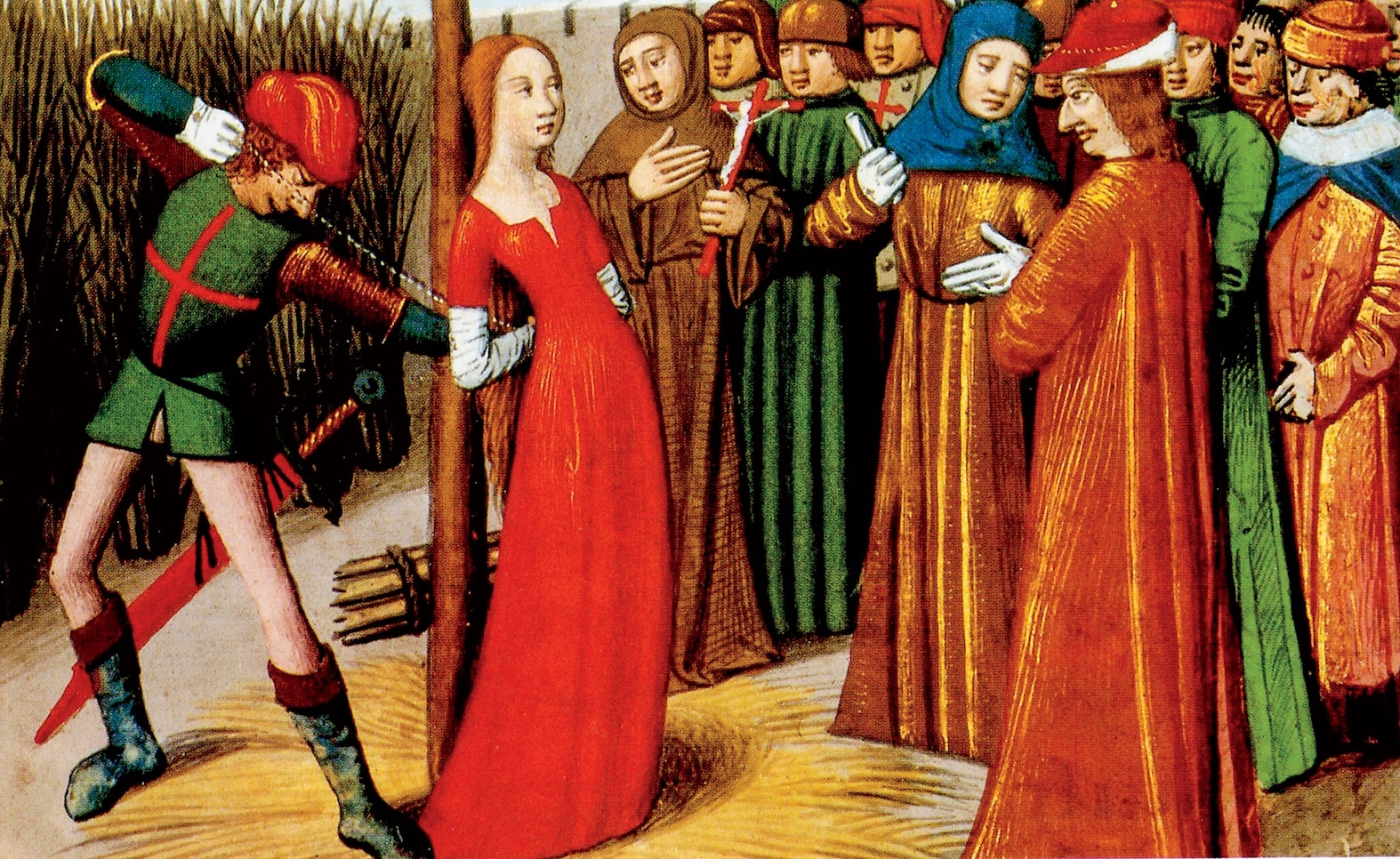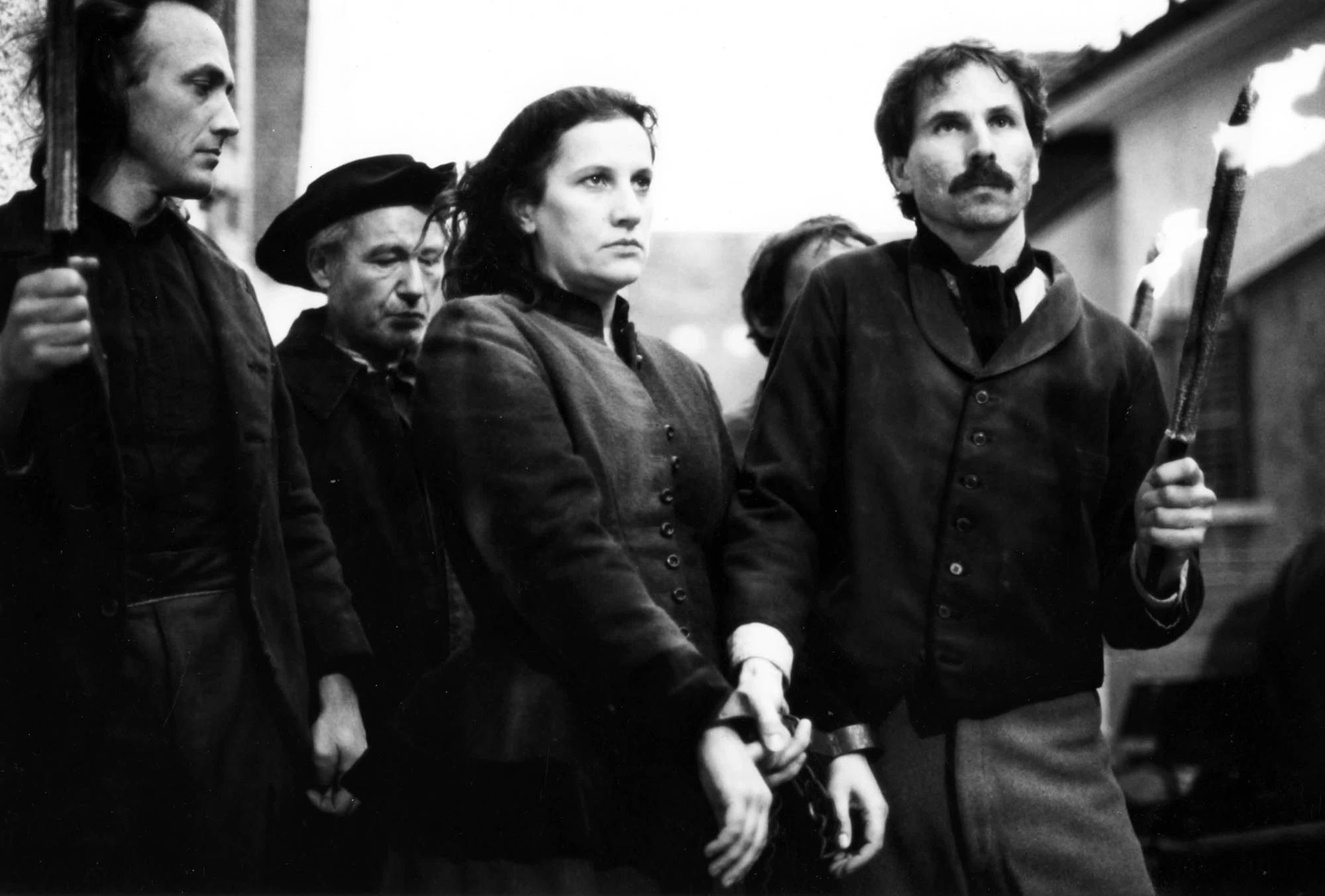The “dark” past of the era of “anti-witch” in Europe
Among the “darkest” events in history, the witch trials resulted in thousands of people being tortured and killed, most of them women. Some of the most famous witch trials took place in 15th-century France, 16th-century Scotland, and 17th-century Massachusetts. Victims were falsely convicted of witchcraft, frequently tortured, and then tried. death. These places suddenly became famous, becoming tourist attractions for posterity tourists.

Witches were once the obsession of mankind. (Photo: National Geographic).
Ancient Sorcerer
The concept of witchcraft — manipulating everyday events with magic — dates back to ancient times. In the 18th century BC, the Hammurabi law contained punishments for witchcraft. In general, witches can be good or bad, practicing so-called white magic to help people or black magic to hurt them.
Often the practitioners are women, and the neighbors will call on them to heal, help mothers during childbirth, and recover lost items. But women like this can also be blamed for bad events like illness and death, hurricanes and earthquakes, or droughts and floods.
Some wielders of such powers were even worshiped as gods, as in ancient Greece. As the main Greek goddess of magic and enchantment, Hecate possessed control over the earth, sky, and sea. And the Greek sorceress Medea helped Jason and the Argonauts obtain the Golden Fleece, the magical wool coat of a flying ram.
But while some of these magic practitioners are adept, those who are said to use ungodly spells, shape-shifting, and pervert heaven’s laws cause fear.
The Origin of Witchcraft in Europe

Margaret Jacobs accused her grandfather George Jacobs of witchcraft, and the Salem court executed him in 1692. (Photo: National Geographic).
For witches in the Middle Ages. The “Black Death” in Europe caused havoc and religious wars led people to believe that evil unnatural forces – such as witches and werewolves – were trying to destroy peace. social peace.
Witches became an easy scapegoat for many popes, especially the 15th-century Innocent VIII, whose inquisition mainly targeted women since the church believed Eve was the source of sin. in the Garden of Eden. Authorities gathered citizens to expose and accuse witchcraft emerging from mundane events such as petty quarrels and grievances. The victims were then tortured, to force confessions. Once the abuser violates the will of the victim, authorities force them to name others and then all are hanged or burned alive.
Joan of Arc, a peasant girl living in medieval France, did not go up to fight the British. As a warrior, she helped liberate the city of Orleans, invigorating the French army. Then, when the English arrested 19-year-old Joan, they accused her of witchcraft and burned her alive on the stake in 1431. Pope Benedict XV canonized Joan in 1920, making her the only person convicted. He was convicted of heresy and later recognized as a saint.
Witches in England

The Witchcraft Act of 1542 was enacted during the reign of King Henry VIII and stipulates that witchcraft is punishable by death. (Photo: National Geographic).
Witchcraft in England reached some of the highest classes in the country. Anne Boleyn, the wife of Henry VIII, with whom he broke with the Catholic Church in 1533, did not bear him the son he wanted. In 1536 convicted of adultery and treason, Anne was beheaded at the Tower of London. After her execution, Anne was accused of being an 11-fingered witch, although when her remains were unearthed in the 19th century, there were no extra fingers at all. After Anne’s death, Henry VIII created the Witchcraft Act of 1542, England’s first law to ban black magic.
In Scotland, witchcraft became a crime, punishable by death, in 1563. Decades after its adoption, King James VI of Scotland fueled his obsession with black magic. , began one of Europe’s worst witch hunts in the 1590s. When his fiancée Princess Anne of Denmark sailed to Scotland to marry James, a storm knocked her down. her ship. The king blamed witchcraft and rounded up people in North Berwick, Scotland, where the inquisition used torture to hear confessions.
Among those unfortunately arrested was midwife Agnes Sampson. The judges stuffed her mouth with a bridle with four sharp prongs and forced her to admit she had tried to kill the king. The strangeness that followed, making her one of about 70 people killed in the event, went on to inspire three witches in Shakespeare’s play Macbeth in Scotland.
Many were forced to pay fines and publicly apologize, while some were jailed for months and tortured. Nineteen were eventually hanged and another was forced to death. The Massachusetts General Court later quashed the guilty verdicts, but that did little to appease the families of the victims and resentment and bitterness persisted for centuries.
Europe’s Last Witch?

Anna Göldi was the last person to be killed for witchcraft in Europe. (Photo: National Geographic).
Anna Göldi works as a domestic worker for a family in Glarus, Switzerland. They accused her of causing one of their daughters to vomit metal objects. Göldi was executed in 1782 and she was the last person to be killed for witchcraft in Europe. In 2008, local authorities dropped all charges against her, and in 2017 the town opened a museum dedicated to her and that dark period.
Belief in witchcraft persisted into the 20th century. During World War II, the New Forest Coven, a group of witches believed to have assembled in England, to cast spells on Adolf Hitler in August 1, 1940.
Across the world today, fear of witchcraft and supernatural powers has not completely faded. In the United States, the “Samaman Panic” of the 1980s and ’90s stirred unfounded conspiracy theories and allegations of ritual abuse of black magic across the country. In the early 2000s, fear of witchcraft fueled violence and death in countries such as Papua New Guinea and Nigeria. As science continues to advance and superstition fades away, perhaps the fear of modern-day witches will truly become a thing of the past.
at Blogtuan.info – Source: danviet.vn – Read the original article here



